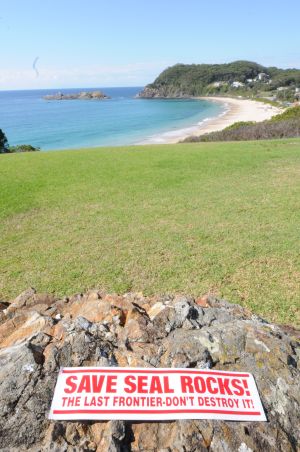|
Australonuphis
''Australonuphis'', commonly called Australian beach worms, are a genus of polychaetous annelid of the family Onuphidae that inhabit the intertidal zone of coastal beaches and are attracted to the surface by the stimulus of food. They are sought by anglers to be used as bait for fishing. Some species can grow more than two metres in length. They are blind but have a very good sense of smell, and eat decaying meat, fish and seaweeds that have washed to shore. Originally identified as a single species in 1868 (''Diopatra teres)'', in 1878 they were placed in the genus ''Onuphis''. A study in 1979 renamed two ''Americonuphis'' species as ''Australonuphis (A. teres and A. parateres)'', both being found in New South Wales. A novel species from the Ecuadorian coast was identified in 2008. Australian beach worms occur in millions on many surf beaches from Queensland, New South Wales and South Australia. They are highly valued as bait by anglers because of their great length and muscul ... [...More Info...] [...Related Items...] OR: [Wikipedia] [Google] [Baidu] |
Species
In biology, a species is the basic unit of Taxonomy (biology), classification and a taxonomic rank of an organism, as well as a unit of biodiversity. A species is often defined as the largest group of organisms in which any two individuals of the appropriate sexes or mating types can reproduction, produce Fertility, fertile offspring, typically by sexual reproduction. Other ways of defining species include their karyotype, DNA sequence, morphology (biology), morphology, behaviour or ecological niche. In addition, paleontologists use the concept of the chronospecies since fossil reproduction cannot be examined. The most recent rigorous estimate for the total number of species of eukaryotes is between 8 and 8.7 million. However, only about 14% of these had been described by 2011. All species (except viruses) are given a binomial nomenclature, two-part name, a "binomial". The first part of a binomial is the genus to which the species belongs. The second part is called the specifi ... [...More Info...] [...Related Items...] OR: [Wikipedia] [Google] [Baidu] |
Seal Rocks, New South Wales
Seal Rocks is a small coastal settlement in the Mid-Coast Council local government area, in the Mid North Coast region of New South Wales, Australia, north-north-east of Sydney. It is famous for its many premier surfing beaches (including Lighthouse Beach, Treachery and Yagon), and also for being the home of Seal Rocks lighthouse, officially known as Sugarloaf Point Lighthouse. At the 2021 census, the area had a population of 56 persons. History Prior to European settlement, the area that is now Seal Rocks was occupied by the Worimi Aboriginal people On 2 June 1864, the ''Rainbow'' was wrecked on Seal Rocks. The Sugarloaf Point Light was installed and lit on 1 December 1875. In 1923, the lighthouse converted from kerosene to acetylene gas. The lighthouse was electrified in June 1966. By 1987, the lighthouse had been automated and no longer required staffed keepers. In 1895 the ''SS Catterthun'', heading for China from Sydney, was wrecked on the rocks and 54 (31?) passengers ... [...More Info...] [...Related Items...] OR: [Wikipedia] [Google] [Baidu] |
Fish Hook
A fish hook or fishhook, formerly also called angle (from Old English ''angol'' and Proto-Germanic ''*angulaz''), is a hook used to catch fish either by piercing and embedding onto the inside of the fish mouth (angling) or, more rarely, by impaling and snagging the external fish body. Fish hooks are normally attached to a line, which tethers the target fish to the angler for retrieval, and are typically dressed with some form of bait or lure that entices the fish to swallow the hook out of its own natural instinct to forage or hunt. Fish hooks have been employed for millennia by fishermen to catch freshwater and saltwater fish. There is an enormous variety of fish hooks in the world of fishing. Sizes, designs, shapes, and materials are all variable depending on the intended purpose of the hook. Fish hooks are manufactured for a range of purposes from general fishing to extremely limited and specialized applications. Fish hooks are designed to hold various types of artificia ... [...More Info...] [...Related Items...] OR: [Wikipedia] [Google] [Baidu] |
Methylated Spirits
Denatured alcohol (also called methylated spirits in Australia, Canada, Ireland, New Zealand, South Africa, and the United Kingdom; wood spirit; and denatured rectified spirit) is ethanol that has additives to make it poisonous, bad-tasting, foul-smelling, or nauseating to discourage its recreational consumption. It is sometimes dyed so that it can be identified visually. Pyridine and methanol, each and together, make denatured alcohol poisonous; and denatonium makes it bitter. Denatured alcohol is used as a solvent and as fuel for alcohol burners and camping stoves. Because of the diversity of industrial uses for denatured alcohol, hundreds of additives and denaturing methods have been used. The main additive usually is 10% methanol (methyl alcohol), hence the name ''methylated spirits''. Other common additives include isopropyl alcohol, acetone, methyl ethyl ketone, and methyl isobutyl ketone. Denatured alcohol blends average 60 to 90% ethanol. Denaturing alcohol does not a ... [...More Info...] [...Related Items...] OR: [Wikipedia] [Google] [Baidu] |
Pilchards
"Sardine" and "pilchard" are common names for various species of small, oily forage fish in the herring family Clupeidae. The term "sardine" was first used in English during the early 15th century, a folk etymology says it comes from the Italian island of Sardinia, around which sardines were once supposedly abundant. The terms "sardine" and "pilchard" are not precise, and what is meant depends on the region. The United Kingdom's Sea Fish Industry Authority, for example, classifies sardines as young pilchards. One criterion suggests fish shorter in length than are sardines, and larger fish are pilchards. The FAO/WHO Codex standard for canned sardines cites 21 species that may be classed as sardines. FishBase, a comprehensive database of information about fish, calls at least six species "pilchard", over a dozen just "sardine", and many more with the two basic names qualified by various adjectives. Etymology 'Sardine' first appeared in English in the 15th century, a loanword ... [...More Info...] [...Related Items...] OR: [Wikipedia] [Google] [Baidu] |
South Australia
South Australia (commonly abbreviated as SA) is a state in the southern central part of Australia. It covers some of the most arid parts of the country. With a total land area of , it is the fourth-largest of Australia's states and territories by area, and second smallest state by population. It has a total of 1.8 million people. Its population is the second most highly centralised in Australia, after Western Australia, with more than 77 percent of South Australians living in the capital Adelaide, or its environs. Other population centres in the state are relatively small; Mount Gambier, the second-largest centre, has a population of 33,233. South Australia shares borders with all of the other mainland states, as well as the Northern Territory; it is bordered to the west by Western Australia, to the north by the Northern Territory, to the north-east by Queensland, to the east by New South Wales, to the south-east by Victoria, and to the south by the Great Australian B ... [...More Info...] [...Related Items...] OR: [Wikipedia] [Google] [Baidu] |
Queensland
) , nickname = Sunshine State , image_map = Queensland in Australia.svg , map_caption = Location of Queensland in Australia , subdivision_type = Country , subdivision_name = Australia , established_title = Before federation , established_date = Colony of Queensland , established_title2 = Separation from New South Wales , established_date2 = 6 June 1859 , established_title3 = Federation of Australia, Federation , established_date3 = 1 January 1901 , named_for = Queen Victoria , demonym = , capital = Brisbane , largest_city = capital , coordinates = , admin_center_type = Administration , admin_center = Local government areas of Queensland, 77 local government areas , leader_title1 = Monarchy of Australia, Monarch , leader_name1 = Charles III , leader_title2 = Governor of Queensland, Governor , leader_name2 = Jeannette Young , leader_title3 = Premier of Queensland, Premier , leader_name3 = Annastacia Palaszczuk (Australian Labor Party (Queensland Branch), AL ... [...More Info...] [...Related Items...] OR: [Wikipedia] [Google] [Baidu] |
New South Wales
) , nickname = , image_map = New South Wales in Australia.svg , map_caption = Location of New South Wales in AustraliaCoordinates: , subdivision_type = Country , subdivision_name = Australia , established_title = Before federation , established_date = Colony of New South Wales , established_title2 = Establishment , established_date2 = 26 January 1788 , established_title3 = Responsible government , established_date3 = 6 June 1856 , established_title4 = Federation , established_date4 = 1 January 1901 , named_for = Wales , demonym = , capital = Sydney , largest_city = capital , coordinates = , admin_center = 128 local government areas , admin_center_type = Administration , leader_title1 = Monarch , leader_name1 = Charles III , leader_title2 = Governor , leader_name2 = Margaret Beazley , leader_title3 = Premier , leader_name3 = Dominic Perrottet ( Liberal) , national_representation = Parliament of Australia , national_representation_type1 = Sen ... [...More Info...] [...Related Items...] OR: [Wikipedia] [Google] [Baidu] |
Bait (luring Substance)
Bait is any appetizing substance used to attract prey when hunting or fishing, e.g. food in a mousetrap. Fishing The term is especially used with regard to catching fish. Traditionally, nightcrawlers, insects, and smaller fish have been used for this purpose. Fishermen have also begun using plastic bait and, more recently, electronic lures, to attract fish. Because of the risk of transmitting '' Myxobolus cerebralis'' ( whirling disease), trout and salmon should not be used as bait. There are various types of natural saltwater bait. Studies show that natural baits like croaker and shrimp are better recognized therefore more readily accepted by fish. The best bait for red drum (red fish) are pogy ( menhaden) and, in the fall, specks like croaker. Hunting Baiting is a common practice in leopard hunting on a safari. A dead, smaller-sized antelope is usually placed high in the tree to lure the otherwise overcautious leopard. The hunter either watches the bait from point wit ... [...More Info...] [...Related Items...] OR: [Wikipedia] [Google] [Baidu] |
Angling
Angling is a fishing technique that uses a fish hook or "angle" (from Old English ''angol'') attached to a fishing line to tether individual fish in the mouth. The fishing line is usually manipulated via a fishing rod, although rodless techniques such as handlining and longlining also exist. Modern angling rods are usually fitted with a reel that functions as a cranking device for storing, retrieving and releasing out the line, although Tenkara fishing and cane pole fishing are two rod-angling methods that do not use any reel. The hook itself can be additionally weighted with a dense tackle called a sinker, and is typically dressed with an appetizing bait to attract the fish and enticing it into swallowing the hook, but sometimes an inedible fake bait with multiple attached hooks (known as a lure) is used instead of a single hook with edible bait. A bite indicator, such as a float or a quiver tip, is often used to relay underwater status of the hook to the surface. ... [...More Info...] [...Related Items...] OR: [Wikipedia] [Google] [Baidu] |








